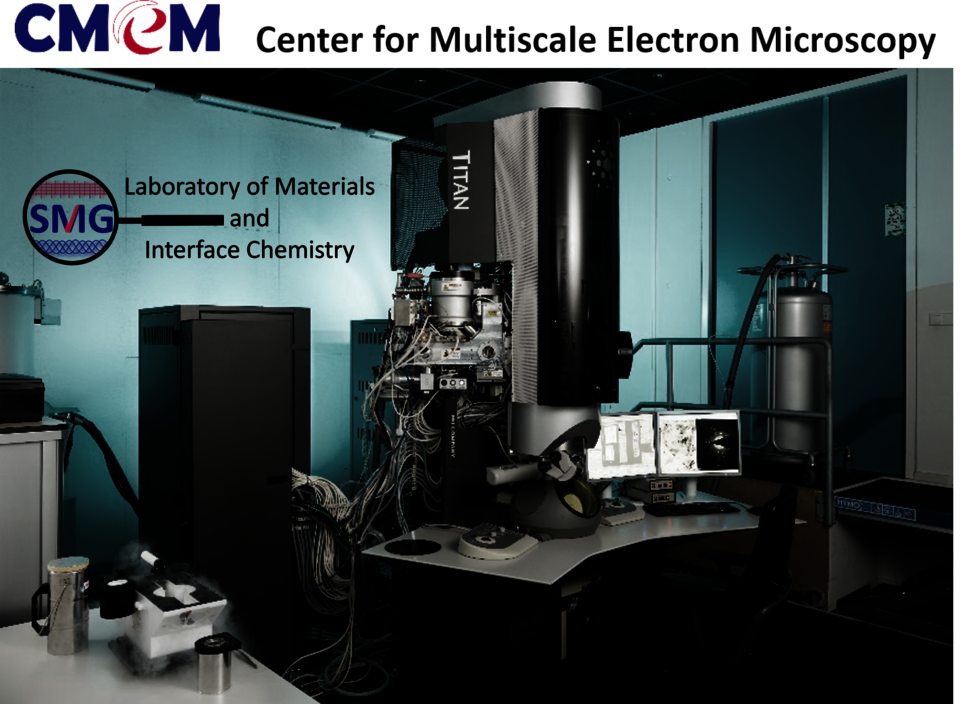CryoTEM TU/e uncovers protein crystal nucleation
A team of researchers from TU/e, VIB and Vrije Universiteit Brussel and the Université Grenobles Alpes, have for the first time uncovered the molecular details of protein crystal nucleation. With the Cryo-TEM in Eindhoven they developed a methodology to be able to control the process of crystallization. The team believe this will significantly advance the development of protein crystals for 3D structure determination and medical applications. Their results are published this week in Nature.
Protein crystals bear great medical and scientific relevance. For decades, they have been essential for structural biologists to solve the three-dimensional structures of proteins using X-ray crystallography, but protein crystals are also used as bio-pharmaceutical delivery agents. Perhaps the best known example is insulin: insulin shots comprise the subcutaneous injection of a suspension of insulin microcrystals which dissolve slowly to yield a steady and sustained delivery over time.
Two limiting factors
Despite their tremendous potential, there are two factors that limit the use of protein crystals in a broad range of applications. First, growing protein crystals, as many molecular biologists will say, can be excruciatingly difficult. Any crystal originates from a nucleus, a tiny crystalline seed, which forms by the spontaneous grouping of a few molecules in solution that have to adopt a regular organization in three-dimensions. How the molecules realize this improbable feat has remained a mystery up until this point.
Polymorph
Secondly, a single protein can crystallize in multiple different crystal forms, this is known as polymorphism. Different crystal polymorphs have different characteristics, with the most notable ones the power to diffract X-rays (crucial for 3D structure determination), and the rate at which it dissolves (crucial for drug delivery). As of yet, it is very difficult to guide the crystallization process to the polymorph of one’s liking. Scientists believe that polymorph selection takes place at the stage of nucleation, but no one knows exactly how the mechanism works.
Nobel prize
The group of scientists have used state-of-the-art cryo-transmission electron microscopy (Cryo-TEM) from TU/e to capture the birth of a protein nucleus at molecular resolution. Eindhoven researcher Heiner Friedrich: “Because the process happens so rapidly, and at such a small length scale, we needed to cryogenically arrest the sample at various stages of the process. Once frozen in time, we use a very sensitive electron microscope to visualize the proteins and how they group together to form a nucleus and finally the protein crystal.” According to Friedrich this work underlines the exciting potential of this technology for which the Nobel Prize in Chemistry was awarded Self-assembly
By analyzing the Cryo-TEM images taken from a series of samples at constant time intervals, they could start to puzzle together the series of molecular collisions that need to take place to form a crystalline nucleus. According to Mike Sleutel, lead author of the study and working at Vrije Universiteit Brussel the process proved to be far more intricate than previous hypotheses people in the field had prior to these observations. “For the protein that we used in our study we uncovered a hierarchical self-assembly process that involves three subsequent stages of self-assembly at ever increasing length scales. These observations are the first of their kind and provide an entirely new way to look at the self-assembly processes of macromolecules into larger structures.”
Polymorph process
But the team went even one step further, and compared the nucleation pathways of multiple polymorphs. The team was even able to control the polymorph selection process. They achieved this by gently tweaking the different modes of interaction that exist between the molecules, steering the nucleation process in the direction of our choosing. “We now know what to learn and look for in CryoTEM experiments,” says Friedrich. “Instead of doing trial and error, it will be possible to guide the crystallization process to the polymorph with the right characteristics you need for structure determination or developing new medical applications.
Top photo | Bart van Overbeeke



Discussion